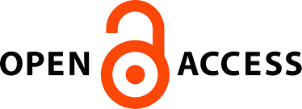| dc.contributor.advisor | Pinzón, Liza Leonor | |
| dc.contributor.advisor | Peña Martínez, Gabriel Rodrigo | |
| dc.contributor.author | Bustos Escobar, Karen | |
| dc.contributor.author | Noriega Talero, Anderson | |
| dc.date.accessioned | 2024-03-11T15:51:06Z | |
| dc.date.available | 2024-03-11T15:51:06Z | |
| dc.date.issued | 2023-10-23 | |
| dc.identifier.uri | http://hdl.handle.net/10818/59458 | |
| dc.description | 94 páginas | es_CO |
| dc.description.abstract | Dada la creciente cantidad de iniciativas relacionadas con la innovación en el ámbito público, se vuelve esencial contar con herramientas que permitan identificar los impulsores de la cultura de la innovación en dicho sector, con el fin de poder establecer, medir o diagnosticar de manera fiable el entorno de partida. Hasta la fecha, esta identificación se ha realizado de manera insuficiente.
Por tal motivo, en este estudio se pretende adaptar y validar un Instrumento de Medición de la Cultura de la Innovación para el sector público.
La primera parte del documento presenta la estructura de la investigación, sentando como base el contexto, las alcaldías locales de Bogotá entre diciembre de 2022 y abril de 2023, e ilustrando los conceptos claves de innovación, cultura, sector público y medición de cultura de innovación, así mismo, se consolida una exhaustiva exploración de herramientas de medición de la cultura de la innovación e igualmente un glosario de los términos estadísticos que darán robustez a este estudio.
La segunda parte de este trabajo se centra en el desarrollo de la investigación, en cuyos párrafos se consolida la adaptación, traducción y validación del instrumento identificado, al igual que los resultados del mismo, donde se realiza el análisis de componentes y se publican los hallazgos, estableciendo una línea de base para las alcaldías locales de Bogotá en cuanto a cultura de la innovación refiere. | es_CO |
| dc.description.abstract | Given the increasing number of initiatives related to innovation in the public sector, it becomes essential to have tools that allow for the identification of drivers of innovation culture within this sector. This is crucial for establishing, measuring, or reliably diagnosing the current environment. To date, this identification has been insufficiently addressed.
Therefore, this study aims to design and validate an Instrument for Measuring Innovation Culture in the public sector. The first part of the document outlines the research structure, based on the context of local municipalities in Bogotá from December 2022 to April 2023. It also elucidates key concepts related to innovation, culture, the public sector, and the measurement of innovation culture. Additionally, it includes an extensive exploration of measurement tools for innovation culture and a glossary of statistical terms that will add rigor to this study. | en |
| dc.format | application/pdf | es_CO |
| dc.language.iso | spa | es_CO |
| dc.publisher | Universidad de La Sabana | es_CO |
| dc.rights | Attribution-NonCommercial-NoDerivatives 4.0 Internacional | * |
| dc.rights.uri | http://creativecommons.org/licenses/by-nc-nd/4.0/ | * |
| dc.title | Adaptación y validación de un instrumento de medición de la cultura de la innovación para el sector público | es_CO |
| dc.type | master thesis | es_CO |
| dc.type.hasVersion | publishedVersion | es_CO |
| dc.rights.accessRights | openAccess | es_CO |
| dc.subject.armarc | Comportamiento organizacional | |
| dc.subject.armarc | Innovaciones administrativas | |
| dc.subject.armarc | Sector público | |
| dc.subject.armarc | Gobierno local -- Bogotá (Colombia) | |
| dcterms.references | Ahmed, P. K. (1998). Culture and climate for innovation. European Journal of Innovation Management,
1(1), 30-43. https://doi.org/10.1108/14601069810199131 | |
| dcterms.references | Alcaldía Mayor de Bogotá. (2023). Información General de Bogotá. https://bogota.gov.co/informaciongeneral-de-bogota. | |
| dcterms.references | Álvarez Collazos, A., & Chica Vélez, S. (2008). Gestión de las Organizaciones Públicas.
https://www.esap.edu.co/portal/wp-content/uploads/2017/10/3-Gestion-de-las-Organizacionespublicas.pdf | |
| dcterms.references | Amabile, T. M. (1997). Motivating creativity in organizations: On doing what you love and loving what
you do. California Management Review, 1. https://doi.org/10.2307/41165921 | |
| dcterms.references | Arenas, D. P., Almanza, O. J., & Santibañez, L. (2023). Funcionamiento el Laboratorio de Innovación
GoLab. En Comunicación personal. | |
| dcterms.references | Bartlett, M. S. (1937). Testing for the homogeneity of two variances in a normal population. British
Journal of Psychology. General Section, Biometrika 29(3-4), 337-344.
https://doi.org/10.1111/j.2044-8295.1937.tb00863.x | |
| dcterms.references | Carmines, Edward G and Zeller, & Richard A. (1979). Reliability and validity assessment. Sage
publications. | |
| dcterms.references | Chesbrough, H. W. (2003). Open Innovation The New Imperative for Creating and Profiting from
Technology (Vol. 658). | |
| dcterms.references | Cohen, R. J., & Swerdlik, M. E. (2001). Pruebas y evaluación psicológicas : introducción a las pruebas y
a la medición. (4a ed.). Mc Graw Hill. | |
| dcterms.references | Comisión Intersectorial de Estadísticas de Finanzas Públicas (CIEFP), Banco de la República (BR)
Departamento Técnico y de Información Económica, Contaduría General de la Nación (CGN) SubContaduría de Consolidación de la Información, Departamento Administrativo Nacional de
Estadística (DANE) Dirección de Síntesis y Cuentas Nacionales Dirección de Geoestadísticas, &
Ministerio de Hacienda y Crédito Público (MHCP) Dirección General de Política Macroeconómica
(DGPM) Dirección General del Presupuesto Público Nacional (DGPPN). (2018). Clasificación de
entidades del sector público colombiano para la elaboración de Estadísticas de Finanzas Públicas.
https://www.urf.gov.co/webcenter/ShowProperty?nodeId=/ConexionContent/WCC_CLUSTER070104 | |
| dcterms.references | Cousineau, D. (2020). How many decimals? Rounding descriptive and inferential statistics based on
measurement precision. Journal of Mathematical Psychology, 97, 102362.
https://doi.org/10.1016/j.jmp.2020.102362 | |
| dcterms.references | Cramér, H. (1999). Front Matter. En Mathematical Methods of Statistics (PMS-9) (pp. I-VI). Princeton
University Press. http://www.jstor.org/stable/j.ctt1bpm9r4.1 | |
| dcterms.references | Cronbach, L. J. (1951). Coefficient alpha and the internal structure of tests. Psychometrika, 16(3), 297-
334. https://doi.org/10.1007/BF02310555 | |
| dcterms.references | Crossan, M. M., & Apaydin, M. (2010). A multi-dimensional framework of organizational innovation: A
systematic review of the literature. Journal of Management Studies, 47(6).
https://doi.org/10.1111/j.1467-6486.2009.00880.x | |
| dcterms.references | DANE. (2023). ¿Cuántos somos? https://www.dane.gov.co/index.php/estadisticas-por-tema/demografiay-poblacion/censo-nacional-de-poblacion-y-vivenda-2018/cuantos-somos. | |
| dcterms.references | Danks, S., Rao, J., & Allen, J. M. (2017). Measuring Culture of Innovation: A Validation Study of the
Innovation Quotient Instrument (Part 2). Performance Improvement Quarterly, 30(1).
https://doi.org/10.1002/piq.21241 | |
| dcterms.references | Davila, Antonio & Epstein, Marc & Shelton, Robert. (2006). Making Innovation Work: How to Manage
It, Measure It, and Profit from It. | |
| dcterms.references | Ferris J, R. (2008). Estadística para las ciencias sociales (McGraw-Hill Interamericana de España S.L,
Ed.). Universidad Santo Tomas. https://doi.org/10.15332/dt.inv.2021.02408 | |
| dcterms.references | Fisher, R. A. (1925). Statistical methods for research workers, 11th ed. rev. En Statistical methods for
research workers, 11th ed. rev. Edinburgh. | |
| dcterms.references | Función Publica Comunicaciones DAFP. (2020). Guía para la implementación de la gestión del
conocimiento y la innovación en el marco del modelo integrado de planeación y gestión (MIPG). En
https://www.funcionpublica.gov.co/web/eva/biblioteca-virtual/-
/document_library/bGsp2IjUBdeu/view_file/37827592 (Versión 1 Diciembre de 2020). | |
| dcterms.references | GIM Institute. (2010). A guide to the Innovation Management Book of Knowledge.
GIM Institute. | |
| dcterms.references | Hair, J. F., Black, W. C., Babin, B. J., & Anderson, R. E. (2013). Multivariate data analysis (Pearson
Education Limited, Ed.). | |
| dcterms.references | Hernández Sampieri, R., Fernández Collado, C., María del Pilar Baptista Lucio, D., & Méndez Valencia
Christian Paulina Mendoza Torres, S. (2014). Metodologia de la Investigacion (6ta edicion). | |
| dcterms.references | Hotelling, H. (1933). Analysis of a complex of statistical variables into principal components. Journal of
Educational Psychology, 24(6), 498-520. https://doi.org/10.1037/h0071325 | |
| dcterms.references | Hurley, R., & Hult, T. (1998). Innovation, market orientation and organizational learning: An integration
and empirical examination. Journal of Marketing, 62(3), 42-56. | |
| dcterms.references | Ireland, R. D., & Hitt, M. A. (1999). Achieving and maintaining strategic competitiveness in the 21st
century. Academy of Management Executive, 13(1). | |
| dcterms.references | Jassawalla, A. R., & Sashittal, H. C. (2002). Cultures that support product-innovation processes. Academy
of Management Perspectives, 16(3), 42-54. https://doi.org/10.5465/ame.2002.8540307 | |
| dcterms.references | Kuczmarski, T. D. (2003). What is innovation? And why aren’t companies doing more of it? Journal of
Consumer Marketing, 20(6). https://doi.org/10.1108/07363760310499110 | |
| dcterms.references | Lundvall, B.-Å. (2011). Notes on innovation systems and economic development. Innovation and
Development, 1(1), 25-38. https://doi.org/10.1080/2157930X.2010.551064 | |
| dcterms.references | Michell, J. (1997). Quantitative science and the definition of measurement in psychology. British Journal
of Psychology, 88(3), 355-383. https://doi.org/10.1111/j.2044-8295.1997.tb02641.x | |
| dcterms.references | Nassar, J., & Mohd Sori, Z. (2017). Can culture stimulate innovation for technopreneurship. Proceedings
of the 5th International Conference on Innovation and Entrepreneurship, ICIE 2017. | |
| dcterms.references | Neyman, J., & Pearson, E. S. (1933). IX. On the problem of the most efficient tests of statistical
hypotheses. Philosophical Transactions of the Royal Society of London. Series A, Containing Papers
of a Mathematical or Physical Character, 231(694-706), 289-337.
https://doi.org/10.1098/rsta.1933.0009 | |
| dcterms.references | OCDE. (2005). Oslo Manual. OECD. https://doi.org/10.1787/9789264013100-en | |
| dcterms.references | OCDE. (2015). The Innovation Imperative in the Public Sector. OECD.
https://doi.org/10.1787/9789264236561-en | |
| dcterms.references | OCDE. (2019). Declaración sobre Innovación en el Sector Público. http://legalinstruments.oecd.org | |
| dcterms.references | OCDE, & Eurostat. (2006). Manual de Oslo: Guía para la Recogida e Interpretación de Datos sobre
Innovación. En OCDE (Número 3). | |
| dcterms.references | Polit, D. F., & Beck, C. T. (2004). Nursing research: Principles and methods. (Lippincott Williams. &
Wilkins., Eds.). | |
| dcterms.references | Rao, J., & Weintraub, J. (2013). How innovative is your company’s culture? MIT Sloan Management
Review, 54(3). | |
| dcterms.references | Richard A. Berk. (2008). Statistical Learning from a Regression Perspective: Vols. XVII, 360. Springer
New York. https://doi.org/10.1007/978-0-387-77501-2 | |
| dcterms.references | Roberts, E. B., & Fusfeld, A. R. (1981). Staffing the innovative technology-based organization. Sloan
Management Review (Pre-1986), 22, no 3, 19. | |
| dcterms.references | Rogers, E. (1962). Difussion of Innovations. NY: The Free. | |
| dcterms.references | Sánchez, C., Lasagna, M., & Marcet, X. (2013). Innovación pública. Un modelo de aportación de valor
(RIL Editores, Ed.; 1a. edición). | |
| dcterms.references | Schumpeter, J. (1996). Capitalismo, Socialismo y Democracia: Vol. Vol. I (George Allen & Unwin Ltda.,
Ed.). Ediciones Folio, Muntaner. | |
| dcterms.references | Secretaría Distrital de Gobierno. (2023). Funciones y Deberes.
https://www.gobiernobogota.gov.co/transparencia/organizacion/funciones-y-deberes. | |
| dcterms.references | Secretaría Distrital de Planeación (SDP). (2023). Estratificación socioeconómica.
https://www.sdp.gov.co/gestion-estudios-estrategicos/estratificacion/estratificacion-por-localidad. | |
| dcterms.references | Smircich, L. (1983). Concepts of Culture and Organizational Analysis. Administrative Science Quarterly,
28(3), 339. https://doi.org/10.2307/2392246 | |
| dcterms.references | Stevens, S. S. (1946). On the Theory of Scales of Measurement. Science, 103(2684), 677-680.
https://doi.org/10.1126/science.103.2684.677 | |
| dcterms.references | Tabachnick, B. G., Fidell, L. S., & Ullman, J. B. (2013). Using multivariate statistics (Pearson, Ed.). | |
| dcterms.references | Tian, M., Deng, P., Zhang, Y., & Salmador, M. P. (2018). How does culture influence innovation? A
systematic literature review. En Management Decision (Vol. 56, Número 5).
https://doi.org/10.1108/MD-05-2017-0462 | |
| dcterms.references | Wolfowitz, J., & Battin, I. L. (1942). On the Problem of Multiple Matching. The Annals of Mathematical
Statistics, 13(3), 305-310. https://doi.org/10.1214/aoms/1177731568 | |
| thesis.degree.discipline | Escuela Internacional de Ciencias Económicas y Administrativas | es_CO |
| thesis.degree.level | Maestría en Gerencia de la Innovación | es_CO |
| thesis.degree.name | Magíster en Gerencia de la Innovación | es_CO |












